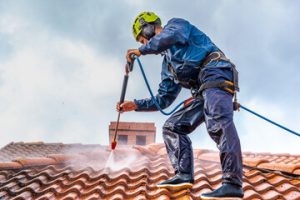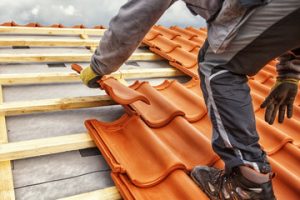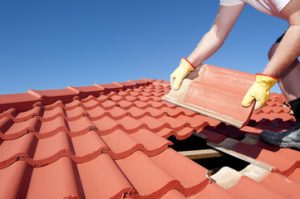Roof Cleaning improves both the appearance and longevity of homes.

Over time, roofs accumulate dirt, algae, and moss that damage shingles. These issues reduce structural integrity and increase repair costs. Modern cleaning strategies focus on efficiency, safety, and preservation. Homeowners benefit from preventive maintenance and aesthetic restoration.
Soft washing has become a preferred cleaning method. Low-pressure water combined with eco-friendly solutions removes buildup gently. This approach avoids damage to shingles and tiles. Longevity and surface protection are the primary goals.
Algae growth is a common roof problem. It causes discoloration and can deteriorate roofing materials. Chemical and natural treatments work to eliminate it safely. Preventive applications reduce recurring infestations.
Moss and lichen contribute to roof decay. These organisms trap moisture, which accelerates wear. Manual removal or soft washing eliminates them effectively. Preventing regrowth is essential for long-term maintenance.
Environmental impact is a key consideration in modern roof cleaning. Biodegradable detergents prevent harm to plants and water systems. Sustainable methods reduce chemical runoff. Eco-conscious approaches are now industry standard.
Seasonal factors influence roof cleaning schedules. Wet climates promote moss and algae, while windy areas accumulate debris. Planning maintenance according to local conditions maximizes results. Timing ensures both safety and effectiveness.
Proper safety equipment is essential. Harnesses, non-slip footwear, and ladders prevent accidents on steep surfaces. Trained professionals minimize risks while performing thorough cleaning. Safety protocols protect workers and homeowners alike.
Roof inspections often accompany cleaning. Technicians identify cracked shingles, damaged flashing, and water damage. Early detection prevents expensive repairs. Combining inspection and cleaning enhances roof health.
Gutter maintenance complements roof cleaning. Blocked gutters cause water backup, which damages shingles and fascia. Clearing debris ensures proper drainage. Integrated maintenance prevents leaks and structural issues.
Preventive coatings extend roof lifespan. Water-repellent and UV-resistant treatments protect surfaces after cleaning. Coatings reduce algae growth and improve aesthetics. Regular application maintains effectiveness over time.
Technology enhances modern roof cleaning. Telescopic cleaning systems, drones, and soft-wash equipment improve precision. Inspections are faster, safer, and more accurate. Technology ensures better outcomes with minimal risk.
Solar panels require specialized care during roof cleaning. Gentle techniques avoid scratches and maintain efficiency. Cleaning schedules consider both roof and panel health. Proper handling preserves energy production and roofing materials.
Metal roofs demand non-abrasive cleaning methods. High-pressure washing can strip protective coatings and accelerate rust. Soft washing with pH-neutral solutions prevents damage. Maintenance extends material life and maintains appearance.
Tile and slate roofs need careful handling. Fragile materials are prone to cracking under pressure. Soft washing and brushing remove debris without harming tiles. Longevity and appearance are preserved through gentle techniques.
Preventing moss regrowth is essential. Zinc or copper strips release ions to naturally inhibit growth. This method reduces the need for repeated chemical treatments. Preventive measures complement cleaning efforts.
Energy efficiency benefits from roof cleaning. Algae and dirt reduce sunlight reflection, affecting insulation. Clean surfaces improve thermal performance. Homeowners save on energy costs while preserving roof health.
Debris management is a key step. Leaves, pine needles, and dirt trap moisture and cause rot. Regular removal protects shingles and prevents staining. Maintenance ensures a clean, functional roof surface.
Storm damage can necessitate emergency cleaning. Fallen branches, accumulated leaves, and rapid moss growth require immediate attention. Prompt intervention prevents leaks and structural damage. Being proactive minimizes repair costs.
Green roofs require specialized cleaning and maintenance. Soil, plant roots, and irrigation systems complicate access. Professionals remove debris without harming vegetation. Healthy green roofs contribute to sustainability and insulation.
Integrated inspection and repair improve roof performance. Minor cracks, loose shingles, and flashing issues are addressed during cleaning. Combining tasks reduces future maintenance needs. Proactive care ensures long-term protection.
Roof pitch determines the cleaning approach. Low-slope roofs allow safer access, while steep angles require harnesses and professional expertise. Techniques are selected based on safety and efficiency. Custom strategies ensure effective cleaning.
Water management affects both cleaning and longevity. Proper slope, gutters, and drainage prevent pooling and leaks. Cleaning supports efficient water flow. Preventing moisture accumulation protects both roof and structure.
Soft washing solutions often include oxygenated bleach. This effectively removes moss, algae, and stains without damaging surfaces. The solution penetrates deeply to prevent regrowth. Results are long-lasting and visually appealing.
Cleaning frequency depends on material and climate. Shingles in shaded or damp areas may require annual treatment. Sun-exposed roofs accumulate dirt more slowly. Customized schedules optimize maintenance and cost efficiency.
Roofs in urban environments face additional pollutants. Dust, soot, and air particles accumulate, accelerating wear. Regular cleaning preserves color and surface integrity. Urban maintenance extends roof lifespan despite environmental stressors.
Surface coatings enhance aesthetic and functional results. Reflective and protective layers maintain color and resist algae growth. Coatings reduce maintenance frequency and improve curb appeal. Combining cleaning and coatings ensures lasting protection.
Cleaning prevents secondary damage. Moisture trapped under moss leads to wood rot and interior leaks. Timely removal prevents shingles from buckling or cracking. Preventive maintenance protects the entire roofing system.
Drones provide a safe way to inspect roofs before cleaning. High-resolution images reveal damage and potential hazards. This minimizes on-site risk for technicians. Drones allow detailed evaluation without compromising safety.
Soft washing is preferable for flat or low-sloped commercial roofs. Gentle detergents remove dirt and prevent material degradation. High-pressure washing risks membrane damage. Proper technique ensures longevity and safety.
Cleaning restores curb appeal and property value. Algae and stains create unsightly streaks. A clean roof improves overall aesthetics. This is particularly important for homes preparing for sale.
Environmental factors dictate cleaning chemical selection. Sensitive plants and nearby water systems require biodegradable options. Careful application prevents ecological harm. Eco-conscious methods balance safety and effectiveness.
Professional training improves outcomes. Knowledge of materials, cleaning solutions, and safety protocols ensures high-quality results. Untrained methods risk damage and inefficient cleaning. Expertise is essential for effective roof care.
Roof cleaning also helps detect early leaks. Moisture stains and weak spots become visible during debris removal. Addressing them early prevents interior damage. Combined cleaning and inspection is both preventative and corrective.
Temperature affects cleaning effectiveness. Extreme heat or freezing conditions can reduce chemical efficiency. Professionals plan cleaning schedules to optimize results. Timing ensures both safety and thorough cleaning.
Roof vents and skylights require careful attention. Debris around these areas can block airflow and cause water damage. Specialized cleaning prevents leaks and maintains function. Integrated maintenance protects all roof components.
Soft washing extends the lifespan of most roofing materials. Gentle methods prevent shingle erosion and tile cracking. Longevity is increased while aesthetics are preserved. Routine maintenance ensures continued protection.
Moss and algae removal improves structural integrity. Moisture held by organic growth accelerates rot. Cleaning prevents shingle decay and maintains waterproofing. Structural benefits complement visual improvements.
Roof coatings often include anti-microbial agents. These prevent regrowth of algae and moss. Surfaces stay cleaner for longer periods. Maintenance intervals are extended, reducing overall cost.
Roof cleaning today emphasizes safety, sustainability, and efficiency. Proper technique, eco-friendly solutions, and preventive measures define modern standards. Homeowners gain durable, attractive, and protected roofs. Regular cleaning ensures both functionality and visual appeal.
Future trends include drone-assisted cleaning and advanced biodegradable solutions. Technology enhances inspection, treatment, and preventive care. Roofs are maintained more efficiently with reduced environmental impact. Modern roof cleaning integrates science, innovation, and sustainability for long-lasting home protection.




